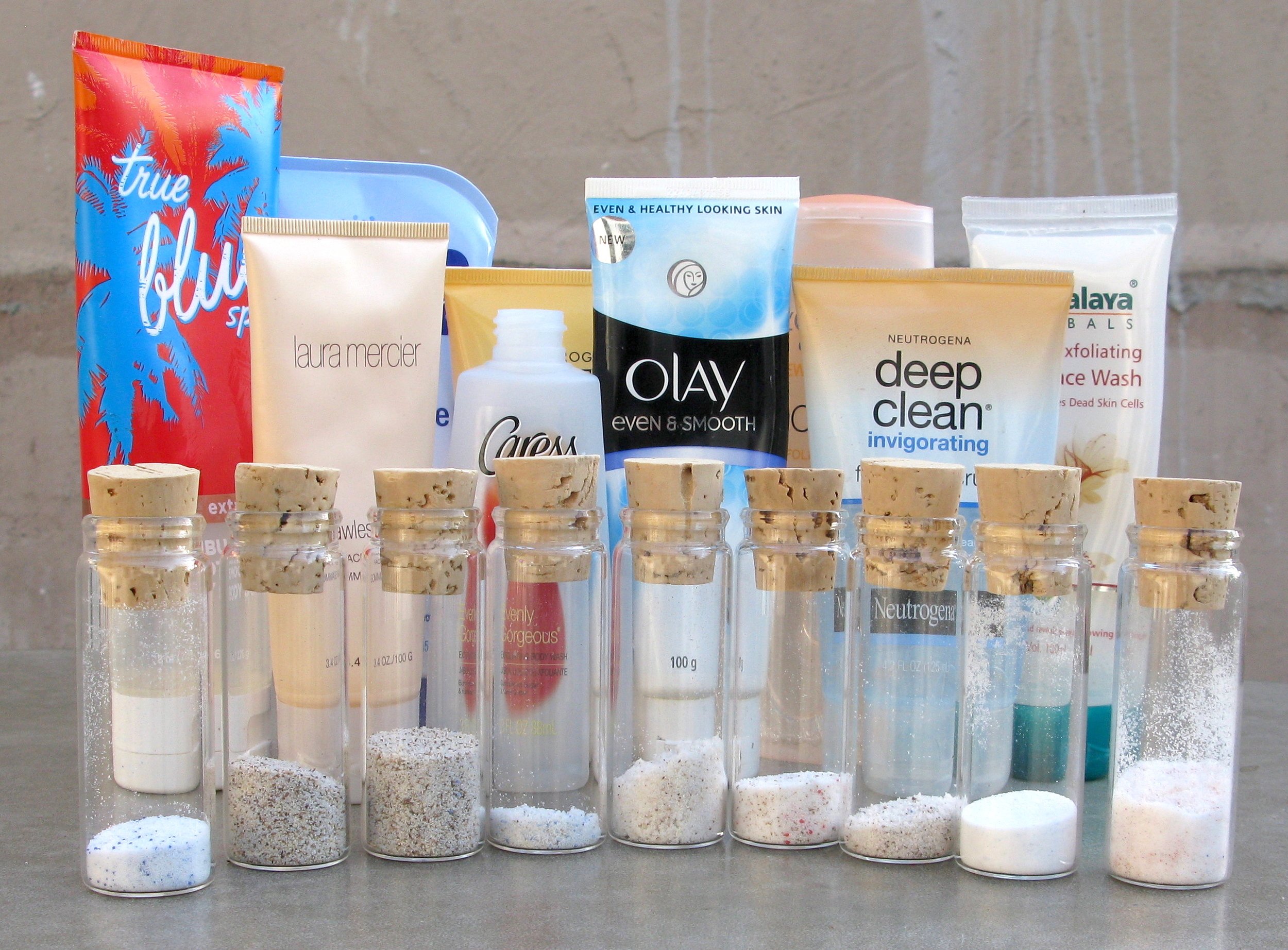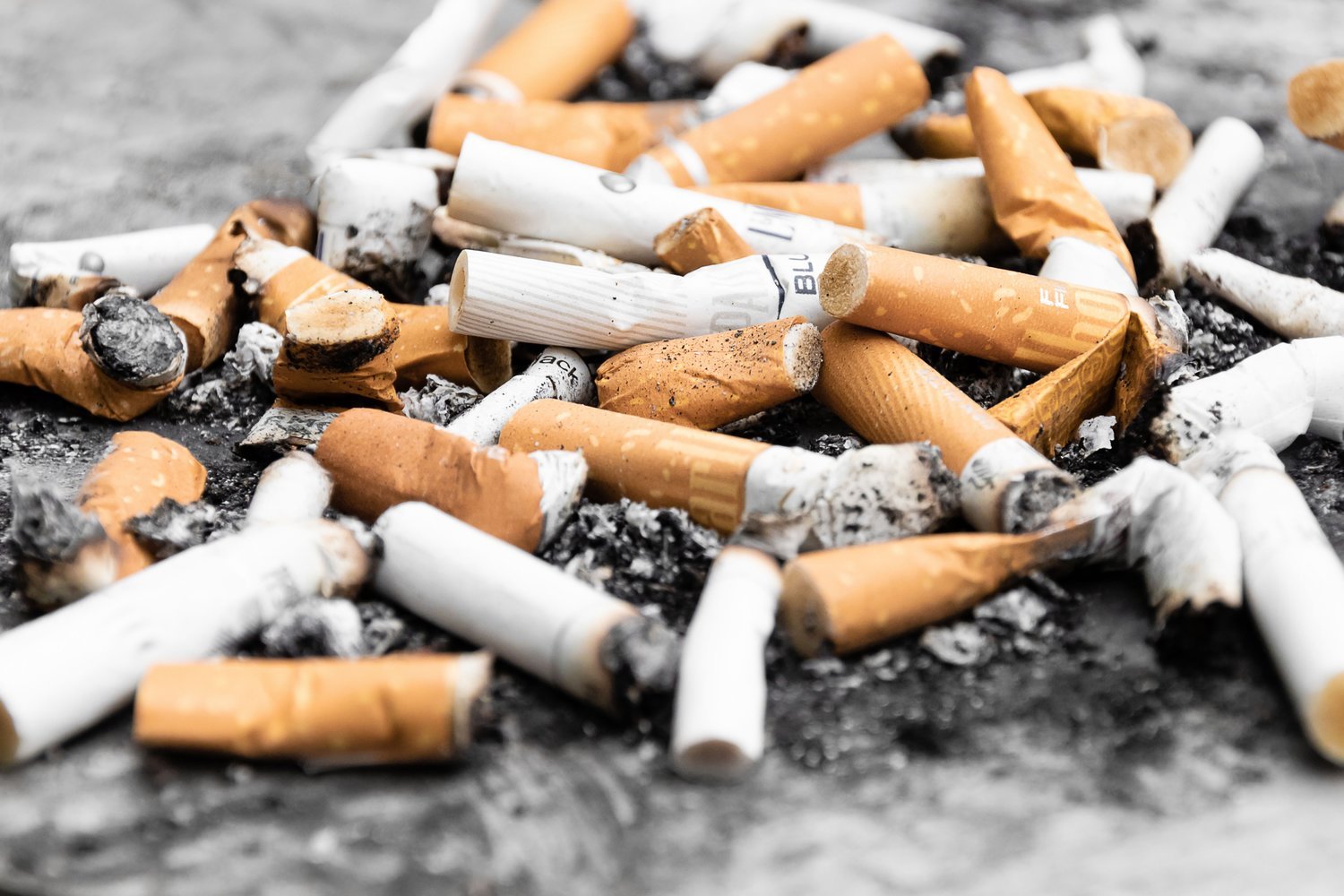TOP PLASTIC POLLUTERS
Discover the top ten plastic polluters in our environment.
Help collect data on plastic pollution by doing a cleanup (anytime, anywhere!), and log your findings in our TrashBlitz app. This data is used to support policy measures and upstream solutions, having an impact beyond the cleanup.
POLYSTYRENE
Plastic Pollution Fact: Plastic polystyrene products are everywhere, from coffee cup lids to straws, to cutlery and cups (even SOLO cups). Expanded polystyrene foam is commonly called "Styrofoam.”
MICROBEADS
Plastic Pollution Fact: One tube of facial scrub can contain more than 330,000 plastic microbeads!
5 Gyres worked with Procter & Gamble, Johnson & Johnson, L'Oreal, and Unilever to voluntarily phase out plastic microbeads from products made by brands like Neutrogena, Dove, and The Body Shop. In 2015, President Obama signed The Microbead-Free Waters Act into law, making these polluting plastics illegal in the United States as of 2018.
FASHION
Plastic Pollution Fact: 60% of our clothing is made from plastic.
If you're not wearing natural fibers like cotton, hemp, or wool, you're probably wearing plastic. All materials shed microfibers when worn and washed, making their way into the ocean, agricultural lands, wildlife, air, drinking water, and even our bodies.
PLASTIC BOTTLES
Plastic Pollution Fact: Americans use nearly 3 million plastic water bottles per hour.
A recent study found that one liter of bottled water contained an average of 240,000 plastic particles. The thing to remember about single-use plastic bottles is they’re easily avoidable. Carry a reusable cup or bottle with you, and fill it up on the go!
PLASTIC STRAWS
Plastic Pollution Fact: We use more than 500 million plastic straws each day.
“It’s just one straw,” said 8 billion people. Straws are too small to be easily recycled, and easily escape the waste stream and end up polluting beaches and parks. In fact, plastic straws are one of the top polluting items found at cleanups and are known to be harmful to animals.
PLASTIC BAGS
Plastic Pollution Fact: Globally, one million single-use plastic bags are used every minute.
Only 1% of plastic bags are recycled each year. In 2014, California became the first state to ban plastic bags, which made international news and set the tone for how the rest of the country deals with the plastic bag problem. Remember to bring a reusable bag to the store to avoid single-use plastic!
MENSTRUAL PRODUCTS
Plastic Pollution Fact: The average woman will use 12,000 disposable tampons, pads, and panty liners over her lifetime.
Single-use plastic wrappers and applicators cannot be recycled and end up in landfills. For years, organizations like Women’s Voices for the Earth have campaigned for disclosure of the risks posed by the presence of petrochemical components in period products. The organization won a huge victory in 2015, when two of the largest manufacturers—Procter and Gamble and Kimberly Clark—agreed to disclose ingredients in pads and tampons.
BALLOONS
Plastic Pollution Fact: Whether latex or mylar, balloons blow away, burst, deflate, and return to pollute the planet.
Balloons can persist in the environment and degrade into tiny pieces. Animals can mistake them for food or become entangled in their ribbons, which can be fatal. Mylar balloons can get caught in power lines and spark fires, posing a danger to communities.
CIGARETTE BUTTS
Plastic Pollution Fact: Made of non-biodegradable cellulose acetate — a type of plastic — cigarette butts are the most common form of plastic litter found on beaches worldwide.
Once in the environment, they leach toxic chemicals — including acetic acid, hexamine, arsenic, and chromium — into our water table, where these chemicals can remain for as many as 10 years and can be poisonous to the fish and wildlife that ingest them.
PLASTIC & CLIMATE CHANGE
Plastic Pollution Fact: 99% of plastic comes from fossil fuels.
Plastic is intrinsically connected to climate change and polluters at every stage of its life cycle, from materials extraction to product production to waste disposal. Currently, one of the most inexpensive ways to make plastic is through “cracking.” When land is fracked to produce fossil fuels, ethane gas is produced as a byproduct. Cracking plants — also known as “crackers”— convert ethane to ethylene, which is used to make polyethylene plastic. Plastic production is projected to triple by 2050.
PLASTIC & ANIMALS
Plastic Pollution Fact: More than 1,200 marine species are impacted by plastic through ingestion or entanglement.
irds, fish, turtles, dolphins, sharks and even whales can be poisoned or trapped by plastic debris, waste, and garbage. Plastic pollution doesn’t just impact marine species; we found 2,000 plastic bags inside the stomach of a camel in Dubai, far from the ocean. It’s been documented inside Asian elephants, black bears in Colorado, and migratory seabirds.











